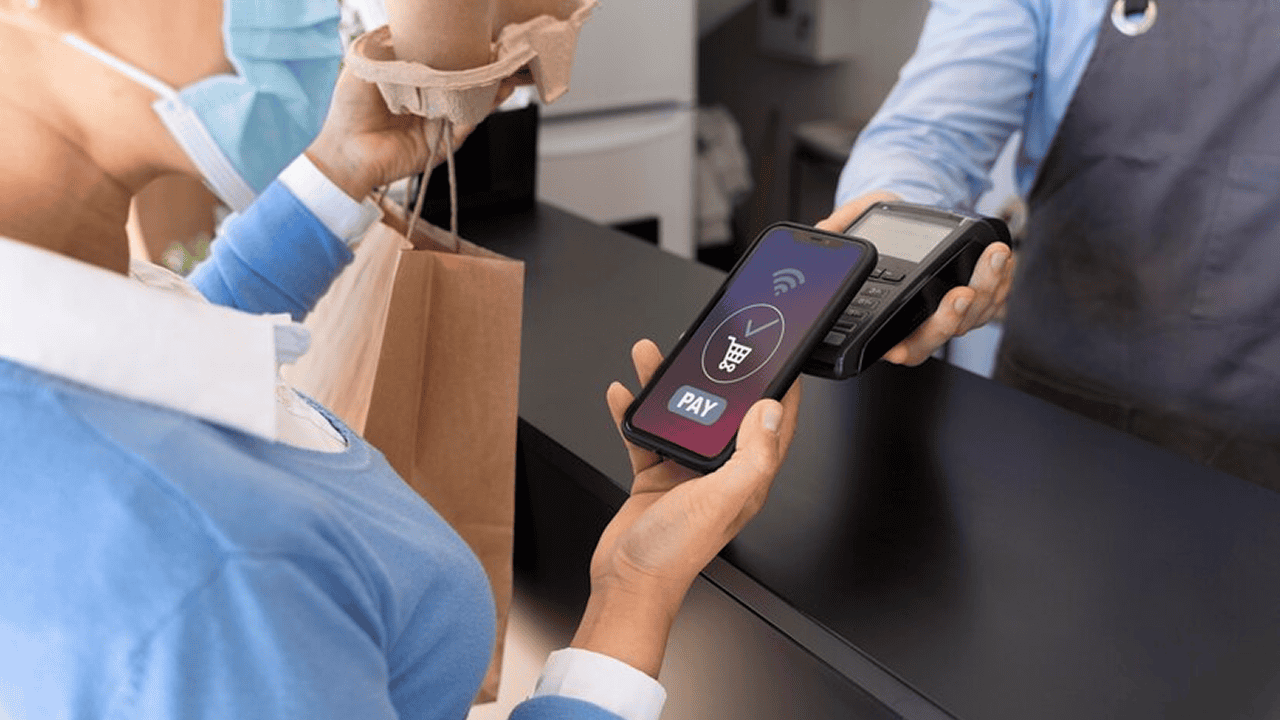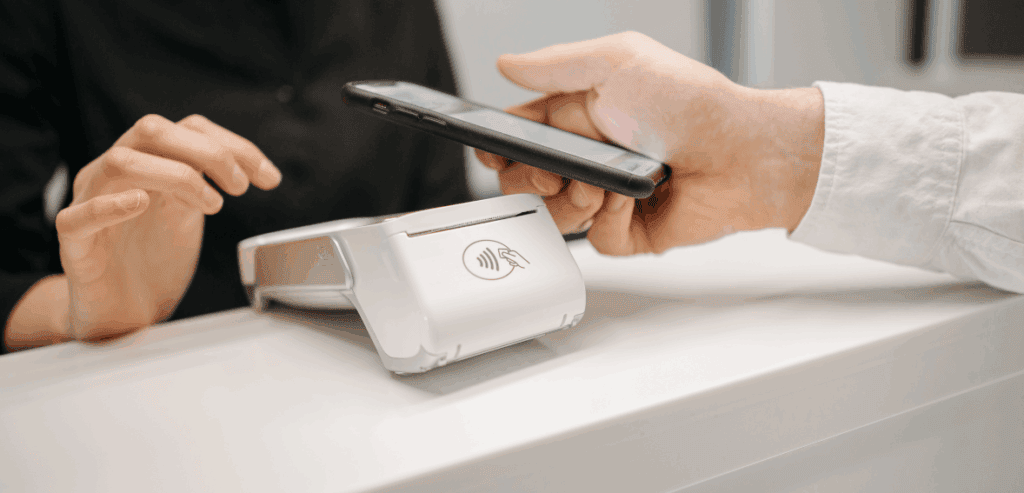
By Sharon Hudson July 9, 2025
The hospitality industry has entered a new era where speed, convenience, and security have become just as important as comfort and service. At the center of this transformation is contactless payment technology, which is not only changing how guests pay but also redefining the entire check-in experience at hotels and resorts around the world.
Once a novelty, contactless payments are now an expected part of a modern hospitality experience. For guests, it means faster service, less physical interaction, and greater control over their stay. For hotels, it offers streamlined operations, lower administrative overhead, and improved guest satisfaction. Whether checking in through a mobile app, tapping a card at a kiosk, or using a smartphone at the front desk, contactless payments are simplifying the check-in process in meaningful ways.
The Evolution of Hotel Check-In

The traditional check-in process has long involved multiple steps—presenting identification, confirming booking details, authorizing a payment, and collecting a room key. While these steps served a purpose, they often led to long queues, delays, and guest frustration, especially during peak hours.
From Manual to Mobile
The first wave of digitization replaced handwritten ledgers with computer systems. The next shift introduced self-service kiosks and online reservations. Now, contactless payments are driving the third wave, enabling guests to complete check-in tasks remotely or with minimal interaction.
This shift is accelerated by a broader digital payment trends of mobile-first behavior. Guests now expect to use their phones for almost everything—ordering food, booking transport, and yes, even managing hotel check-ins. Integrating payment into this process removes one more hurdle and creates a frictionless start to their stay.
Health and Safety Accelerated Adoption
During the COVID-19 pandemic, contactless solutions became a necessity. Hotels adopted digital check-in, mobile keys, and touch-free payment to reduce risk. As a result, guests became more comfortable with these options. Even as safety restrictions eased, the convenience of contactless solutions made them a lasting preference rather than a temporary fix.
What Are Contactless Payments?
Contactless payments are transactions made without physical contact between the payment method and the terminal. They typically use NFC (Near Field Communication) or QR code technology to enable fast and secure exchanges.
Forms of Contactless Payments
- Tap-to-pay cards: Guests simply tap their credit or debit card on a payment terminal.
- Mobile wallets: Apple Pay, Google Pay, Samsung Pay, and other smartphone-based systems store card information securely and allow users to pay with their devices.
- Wearables: Smartwatches and fitness trackers can also be used to authorize transactions.
- QR codes: Some hotels use QR codes that guests can scan with their phones to initiate payment.
These methods reduce physical contact, speed up the transaction, and enhance the guest experience.
Integrating Contactless Payments into Check-In
The real power of contactless payments lies in how they integrate with the broader check-in process. From the moment a guest confirms a booking to the moment they receive their room key, payment can now be a seamless part of the journey.
Online Pre-Authorization
Before arrival, guests can authorize payment through a hotel’s website or app. This step confirms the reservation and speeds up verification at the property. It also allows the hotel to hold a security deposit or capture incidentals, all without requiring in-person interaction.
Self-Service Kiosks and Digital Terminals
At the property, self-check-in kiosks are often equipped with contactless readers. Guests tap their card or phone, confirm their details, and receive a digital or physical room key. These kiosks are particularly useful during busy periods or late-night arrivals.
App-Based Check-In
Many boutique and chain hotels now offer app-based check-in. Guests use the app to confirm their stay, submit ID, pay using stored payment methods, and receive a digital room key. The entire experience happens without visiting the front desk.
Guest Benefits: Faster, Smarter, and Safer

Guests are quick to embrace technologies that make travel easier. Contactless payments deliver multiple benefits that enhance the overall experience.
Speed and Convenience
Long lines at the front desk are a common frustration. Contactless payments dramatically reduce the time required to check in. A tap or scan replaces manual entry and signature, freeing guests to begin enjoying their stay almost immediately.
Reduced Touchpoints
Especially important for health-conscious travelers, contactless systems minimize shared surfaces. Guests avoid handing over cards, pens, or IDs, which makes the entire process more hygienic and secure.
Personal Control
With mobile check-in and payment, guests feel more in control. They choose when and how to check in. They can verify charges, request upgrades, or add services—all from their phone—without waiting for staff availability.
Better First Impressions
The arrival experience sets the tone for the entire stay. A fast, smooth, and contactless check-in leaves a positive first impression and contributes to higher guest satisfaction.
Operational Advantages for Hotels
The benefits of contactless payments extend to hotel operations as well. For hotels, the move toward digital check-in supported by contactless payments results in better efficiency, cost savings, and new opportunities for personalization.
Reduced Front Desk Load
Front desk staff spend less time handling routine check-in tasks. This allows them to focus on higher-value interactions like welcoming guests, answering questions, or solving problems. For small hotels with limited staff, this is especially valuable.
Fewer Errors
Contactless systems reduce the chance of human error. Payment information is captured directly by secure systems, which lowers the risk of incorrect charges or misplaced documentation.
Real-Time Data Capture
When a payment is made digitally, it is instantly recorded. This real-time data can be used for analytics, forecasting, or targeting guests with relevant offers during their stay. It also simplifies nightly reconciliations and accounting.
Increased Revenue Opportunities
Many contactless systems include prompts for upgrades or add-ons during check-in. These offers are easier for guests to accept when the payment process is integrated, leading to higher revenue per booking.
Technology Requirements and Infrastructure
To implement contactless check-in with integrated payment, hotels need more than just a payment terminal. The right infrastructure and platform integration are critical.
Modern Property Management Systems (PMS)
Your PMS must be able to interact with your payment gateway. It should allow for booking confirmation, guest profiles, payment holds, and room assignment. Cloud-based systems are typically more flexible and easier to integrate with contactless tools.
Payment Gateway Integration
Choose a PCI-compliant payment gateway that supports contactless transactions and works with your PMS. Ensure that the system allows for tokenization and secure card-on-file storage, which is essential for room charges and incidentals.
Mobile App or Web Interface
If offering mobile check-in, your app or website must be user-friendly and capable of handling ID upload, payment authorization, and secure room access. Guest adoption depends heavily on how intuitive the system feels.
NFC and QR-Enabled Terminals

Equip the front desk, kiosks, and concierge points with terminals that accept tap-to-pay and mobile wallets. Staff should be trained to troubleshoot or assist guests unfamiliar with the technology.
Security and Compliance
Contactless payments must be secure, especially when integrated with check-in systems that store sensitive guest data.
PCI DSS Compliance
Any system that processes credit card data must be PCI-compliant. This means encrypting data, using secure networks, and regularly monitoring for vulnerabilities. Hotels must ensure both their PMS and payment gateway meet these standards.
Tokenization and Encryption
Tokenization replaces card data with a unique identifier, reducing the risk of theft. Encryption protects data during transmission. Both are essential for maintaining guest trust and meeting compliance requirements.
Privacy and Consent
Guests should be clearly informed about how their data will be used. Consent must be obtained for card storage or recurring charges. Transparency builds trust and encourages adoption.
Overcoming Implementation Challenges
While the benefits of contactless payment at check-in are clear, the path to implementation can involve challenges, especially for smaller or legacy hotels.
Cost of Upgrades
Modernizing PMS, installing contactless terminals, and building app capabilities require upfront investment. However, many vendors now offer scalable or subscription-based models that lower the entry barrier for independent hotels.
Staff Training
New systems mean new routines. Staff must be trained not only to operate the tools but to assist guests who may be unfamiliar with contactless options. This includes understanding how to handle failed transactions or offering alternatives.
Guest Communication
Introducing contactless check-in must be supported by clear guest communication. Emails before arrival, website FAQs, and on-site signage help guests know what to expect and how to participate in the process.
Use Cases and Examples
To illustrate the impact, consider a few real-world scenarios where contactless payments transform the check-in experience.
Business Traveler in a Rush
A guest arrives for a conference, having already checked in via the hotel app. Their card is pre-authorized, and their phone acts as the room key. Within minutes, they’re in their room and back online, preparing for a presentation.
Family on Vacation
A family arrives with luggage and children in tow. They scan a QR code at a kiosk, tap their card, and receive two room keys and a schedule of local activities. The process is fast, contact-free, and easy to manage.
Digital Nomad on an Extended Stay
A digital nomad checks in using a stored card in their Apple Wallet. Over the next week, they charge meals and laundry to their room without ever pulling out a physical card. At checkout, they receive a summary by email and pay with a single tap.
Looking Ahead: The Future of Contactless Check-In
As hospitality continues to embrace technology, contactless payments are becoming the foundation of broader digital experiences. Future developments will likely build on this foundation.
Biometric Check-In
Fingerprint or facial recognition could become standard for room access and payments. This would further streamline the process and increase security.
AI-Driven Personalization
Using data from past payments and stays, AI could suggest tailored experiences during check-in. This might include room upgrades, meal plans, or spa treatments based on guest preferences.
Unified Experience Across Properties
Hotel groups may offer guests a consistent, app-based experience across multiple locations. A guest who stays at one property could use the same app and payment credentials to check in at another, increasing loyalty and ease of use.
Conclusion
Contactless payments are no longer just about faster transactions. They are reshaping how hotels engage with guests from the very first moment of the stay. By powering seamless, secure, and efficient check-in experiences, contactless technology enhances convenience for guests while streamlining operations for hotels.
For hoteliers, especially in the boutique and independent segments, now is the time to embrace this transformation. Investing in the right technology, training staff, and communicating clearly with guests can turn contactless payment from a feature into a competitive advantage. As traveler expectations continue to rise, delivering a smooth, digital-first check-in will be key to winning loyalty and driving long-term success.